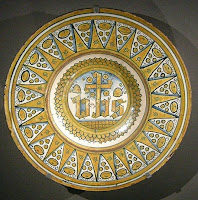"Eventually, everything connects." -Charles Eames
For so long people like Charles Sagan are wondering and studying the meaning of life. Sagan is one of the people who brings together the idea of the space knowledge and science of space to popular culture. This is quite a fascinating subject when you realize that is has been studied for years and years all the way back to the ancient times. People have been fascinated with space and light and the planets since the beginning of time wondering how it all works and continuing to discover new breathtaking and life changing inventions. All of the concepts that we have been learning about each week bring the knowledge full circle with the idea of space and art. This week is where it all comes together. All the spectrums of nano tech, biotech, math and robots combine to create new discoveries and show the beauty of space.
I think one of the most mesmerizing areas of art is art from space. Richard Clar has been studying the problem of orbital debris in space. He has combined the worlds of art and technology in his work to portray the environmental issues such as orbital debris around planet Earth. This picture shows one of his pieces of work and to me is very beautiful. Clar has collaborated with Aerospace, Naval Research Labs and Boeing his unique artistic vision portrays art technology and densely engineered materials into contemporary art work.
On campus we have our very own Basic Plasma Science facility which generates unique images such as this picture above of a three dimensional laser produced plasma collision. There is the LAPD device which portrays magnetic fields due to wave currents. Space technology and the engineering that goes into developing these machines and devices to capture such images of space is inspiring. There is so much that we cannot see with the human eye such as nano technology and the same goes for space. The research and patience that goes into making space technology to capture moments that are blind to the human eye is amazing. Then these moments are transferred into a picture which creates a piece of artwork for the rest of the world to see.
 |
| Apollo 8 Coming Home |
Clar, Richard. "Website of Richard Clar and Art Technologies, a Collaboration between Space Technology and the Arts." Website of Richard Clar and Art Technologies, a Collaboration between Space Technology and the Arts. Art Technologies Webdesign by Studio Resistance, 2005. Web. 29 May 2015.
"Basic Plasma Science Facility at UCLA." BaPSF. 2013. Web. 29 May 2015. http://plasma.physics.ucla.edu/page/research.html
Newitz, Annalee. "How To Build A Space Elevator And Become An Interplanetary Civilization." How To Build A Space Elevator And Become An Interplanetary Civilization. 12 Feb. 2011. Web. 29 May 2015.
Dunbar, Brian. "NASA Art Space." NASA. NASA, 29 Nov. 2012. Web. 29 May 2015.
"A Pale Blue Dot." A Pale Blue Dot. Web. 29 May 2015.
http://www.bigskyastroclub.org/pale_blue_dot.html
Vesna,Victoria, Lecture. Space Part 1. 2015. Film. May 2015.





















